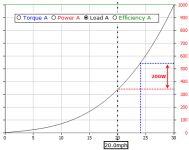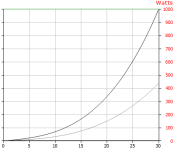This has probably been covered on this forum before, but I couldn't find it with the search function.
Let's say I have an e-bike kit, a 500W brushless hub motor w/36V battery, that gets my bike up to 20 mph with no pedaling.
Here's the question: Assuming my bike is geared high enough for me to pedal at high speeds, if I pedal while the motor is at top speed can I get up to 30 mph or is there a point at which the motor will start resisting me and prevent me from going that fast?
I ask because I have always used low-geared single-speed bikes for my e-bikes, which don't allow for effective pedaling at high speeds. But I might be switching to a different bike with gears. A recumbent, actually, that I can get to 30 mph on *without* a motor on the flats. Just how fast will I be able to go once the motor is in place, wind resistance notwithstanding?
Let's say I have an e-bike kit, a 500W brushless hub motor w/36V battery, that gets my bike up to 20 mph with no pedaling.
Here's the question: Assuming my bike is geared high enough for me to pedal at high speeds, if I pedal while the motor is at top speed can I get up to 30 mph or is there a point at which the motor will start resisting me and prevent me from going that fast?
I ask because I have always used low-geared single-speed bikes for my e-bikes, which don't allow for effective pedaling at high speeds. But I might be switching to a different bike with gears. A recumbent, actually, that I can get to 30 mph on *without* a motor on the flats. Just how fast will I be able to go once the motor is in place, wind resistance notwithstanding?



